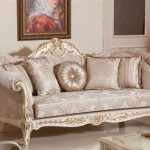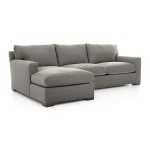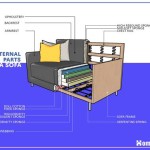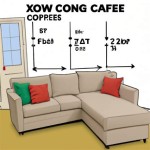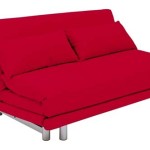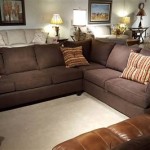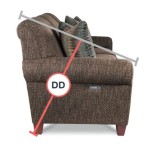Understanding Pillow Back Sofa Cushions: Comfort, Style, and Maintenance
Pillow back sofa cushions, characterized by their loose, often generously sized pillows forming the sofa's backrest, have become a popular choice for homeowners seeking a relaxed and comfortable seating experience. Unlike sofas with fixed or semi-attached back cushions, pillow back designs offer a more informal aesthetic and allow for greater customization of lumbar support. However, their unique design also necessitates specific considerations regarding maintenance, support, and overall suitability within a living space.
This article provides a comprehensive overview of pillow back sofa cushions, exploring their key features, benefits, drawbacks, common filling materials, considerations for choosing the right sofa, and essential maintenance tips to ensure longevity and optimal comfort. The aim is to equip readers with the knowledge necessary to make informed decisions about incorporating pillow back sofas into their homes.
Key Features and Benefits of Pillow Back Sofas
The defining characteristic of a pillow back sofa is the use of multiple loose cushions to form the backrest. These cushions are typically not attached to the sofa frame, allowing them to be moved, rearranged, and even replaced individually. This design feature contributes to several key benefits:
Enhanced Comfort: The loose nature of the cushions allows them to conform to the individual's back, providing a more personalized and comfortable seating experience. The cushions can be adjusted to provide support in specific areas, such as the lumbar region. Furthermore, the often-generous filling of these cushions adds to the overall plushness and sink-in comfort.
Customizable Support: Unlike sofas with fixed back cushions, pillow back sofas offer the flexibility to adjust the level of support. Cushions can be added or removed to achieve the desired firmness and height. This is particularly beneficial for individuals with back pain or other specific postural needs. The ability to rearrange cushions also allows users to create different seating configurations suitable for lounging, reading, or socializing.
Relaxed Aesthetic: Pillow back sofas tend to project a more casual and inviting atmosphere compared to their more structured counterparts. The slightly disheveled appearance of the loose cushions contributes to a sense of informality and relaxation, making them well-suited for living rooms designed for comfort and leisure. The aesthetic flexibility of pillow back designs allows them to blend seamlessly into a variety of interior styles, from bohemian and coastal to modern and eclectic.
Increased Versatility: Because cushions are loose, many pillow back sofas can be easily converted into makeshift beds. Simply removing the back cushions allows for a more spacious and comfortable sleeping surface. This is particularly useful in smaller living spaces or guest rooms where maximizing functionality is paramount.
Ease of Maintenance: Although the loose cushions require regular fluffing, they are also relatively easy to clean and maintain. Individual cushion covers can often be removed and washed, making it simpler to address spills and stains. In some cases, individual cushions can even be replaced if they become irreparably damaged, extending the lifespan of the sofa.
Potential Drawbacks of Pillow Back Sofas
While pillow back sofas offer numerous advantages, it's important to consider their potential drawbacks before making a purchase:
Maintenance Requirements: The loose nature of the cushions means they require more frequent fluffing and adjusting to maintain their shape and appearance. Over time, the cushions can flatten or lose their form, requiring regular maintenance to restore their loft. This can be a concern for individuals seeking a low-maintenance seating option.
Lack of Formality: The relaxed aesthetic of pillow back sofas might not be suitable for more formal or traditional living spaces. Their informal appearance can sometimes clash with a more sophisticated or polished décor. This necessitates careful consideration of the overall design scheme of the room.
Space Consumption: Pillow back sofas often have a deeper frame to accommodate the loose cushions, potentially taking up more floor space compared to sofas with fixed back cushions. This is a crucial consideration for smaller living rooms where space is limited. Careful measurement and planning are essential to ensure the sofa fits comfortably within the available area.
Potential for Discomfort: If the cushions are not properly filled or if the sofa frame does not provide adequate support, pillow back sofas can potentially lead to discomfort or even back pain. It's important to choose a sofa with high-quality cushions and a supportive frame to ensure optimal ergonomics. Trying out the sofa in person before purchasing is highly recommended.
Difficulty in Maintaining a Neat Appearance: The loose cushions can sometimes appear messy or disorganized, especially if they are not regularly fluffed and arranged. This can be a concern for individuals who prefer a highly curated and tidy living space. Implementing a regular maintenance routine is crucial to maintain a presentable appearance.
Common Filling Materials for Pillow Back Cushions
The filling material used in pillow back cushions significantly impacts their comfort, support, and longevity. Common filling options include:
Polyester Fiberfill: Polyester fiberfill is a synthetic material known for its affordability, lightweight nature, and hypoallergenic properties. It provides a relatively soft and plush feel, but it tends to lose its shape and loft over time, requiring frequent fluffing. Polyester fiberfill is a cost-effective option for budget-conscious buyers, but it may not be the most durable or supportive choice.
Down Feathers: Down feathers are a natural filling material derived from the soft plumage of ducks or geese. They offer exceptional softness, warmth, and loft, providing a luxurious seating experience. However, down feathers can be more expensive than synthetic alternatives and may require specialized cleaning. Additionally, individuals with allergies should exercise caution when considering down-filled cushions.
Feather and Down Blend: A blend of feathers and down feathers offers a compromise between cost and comfort. This combination provides a softer and more luxurious feel compared to pure feather fillings while remaining more affordable than pure down fillings. The ratio of feathers to down can vary, impacting the overall softness and support.
Foam: Foam cushions offer a firmer and more supportive seating experience compared to fiberfill or down. Various types of foam are available, including polyurethane foam, memory foam, and high-density foam. Polyurethane foam is a relatively affordable option, while memory foam conforms to the body's shape for customized support. High-density foam offers superior durability and resistance to sagging.
Combination Fillings: Some pillow back cushions utilize a combination of filling materials to achieve aBalance of comfort, support, and durability. For example, a cushion might be filled with a core of high-density foam surrounded by a layer of down feathers or fiberfill. This approach allows for customized comfort and performance.
Choosing the Right Pillow Back Sofa: Key Considerations
Selecting the right pillow back sofa involves careful consideration of several factors to ensure it meets individual needs and preferences:
Size and Dimensions: Accurately measure the available space in the living room to ensure the sofa fits comfortably without overcrowding the area. Consider the overall dimensions of the sofa, including its width, depth, and height, as well as the depth of the seat and the height of the back cushions.
Frame Construction: Opt for a sofa with a sturdy and well-constructed frame made from durable materials such as hardwood or metal. A robust frame will provide long-lasting support and prevent sagging or warping over time. Check for reinforced joints and quality craftsmanship.
Fabric and Upholstery: Choose a fabric that is both aesthetically pleasing and durable. Consider factors such as stain resistance, ease of cleaning, and resistance to fading. Common upholstery options include cotton, linen, polyester, and microfiber. Leather is also a popular choice for its durability and luxurious appearance.
Cushion Filling: Select a cushion filling that provides the desired level of comfort and support. Consider factors such as softness, firmness, and durability. Experiment with different filling options to determine which one best suits individual preferences and postural needs.
Style and Design: Choose a sofa style and design that complements the overall aesthetic of the living room. Consider factors such as the shape of the sofa, the design of the legs, and the color and pattern of the upholstery.
Maintenance Tips for Pillow Back Sofa Cushions
Proper maintenance is essential to prolong the lifespan and maintain the appearance of pillow back sofa cushions:
Regular Fluffing: Fluff the cushions regularly to maintain their shape and loft. This helps to prevent the filling from clumping and ensures even distribution of support. Ideally, cushions should be fluffed daily or at least several times a week.
Rotating and Flipping: Rotate and flip the cushions periodically to distribute wear evenly. This helps to prevent sagging and flattening in specific areas. Cushions should be rotated and flipped every few months.
Spot Cleaning: Address spills and stains immediately by spot cleaning with a mild detergent and a clean cloth. Avoid using harsh chemicals or abrasive cleaners, as these can damage the fabric. Blot the stain gently rather than rubbing it vigorously.
Professional Cleaning: Consider professional cleaning every one to two years to remove accumulated dirt and grime. This can help to extend the lifespan of the cushions and maintain their appearance. Choose a professional cleaning service that specializes in upholstery cleaning.
Vacuuming: Vacuum the cushions regularly to remove dust, dirt, and pet hair. Use a brush attachment to reach crevices and seams. This helps to prevent the buildup of allergens and maintain a clean and hygienic seating environment.
Sunlight Protection: Avoid exposing the cushions to direct sunlight for extended periods, as this can cause fading and discoloration. Use curtains or blinds to filter sunlight during peak hours. Consider applying a fabric protector to enhance resistance to fading.

Nevada Extra Large Sofa Pillow Back Split Roomes Furniture Interiors

How Sofa Back Cushions Affect Your Comfort The Stated Home Blog

How Sofa Back Cushions Affect Your Comfort Diy Pallet Couch

How Sofa Back Cushions Affect Your Comfort On Large
Your Guide To Choosing The Right Cushion Filling Dfs

How To Fix Sagging Couch Cushions Thistlewood Farm

Replacement Couch Pillows Bring Life Back To Your Old

Modhomeeccrumpledbackcushions Cushions On Sofa Back Couch

Parker Knoll Devonshire 2 Seater Pillow Back Sofa Bham Furniture

How Sofa Back Cushions Affect Your Comfort The Stated Home Blog

